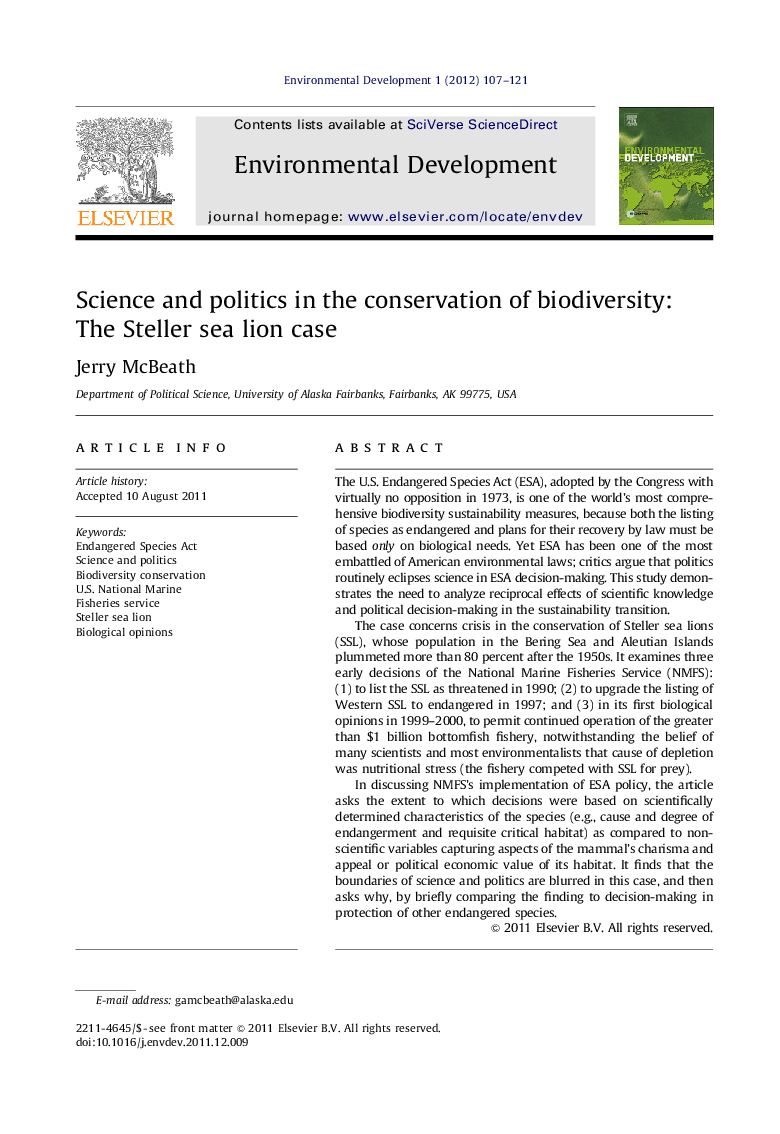| Article ID | Journal | Published Year | Pages | File Type |
|---|---|---|---|---|
| 4391611 | Environmental Development | 2012 | 15 Pages |
The U.S. Endangered Species Act (ESA), adopted by the Congress with virtually no opposition in 1973, is one of the world's most comprehensive biodiversity sustainability measures, because both the listing of species as endangered and plans for their recovery by law must be based only on biological needs. Yet ESA has been one of the most embattled of American environmental laws; critics argue that politics routinely eclipses science in ESA decision-making. This study demonstrates the need to analyze reciprocal effects of scientific knowledge and political decision-making in the sustainability transition.The case concerns crisis in the conservation of Steller sea lions (SSL), whose population in the Bering Sea and Aleutian Islands plummeted more than 80 percent after the 1950s. It examines three early decisions of the National Marine Fisheries Service (NMFS): (1) to list the SSL as threatened in 1990; (2) to upgrade the listing of Western SSL to endangered in 1997; and (3) in its first biological opinions in 1999–2000, to permit continued operation of the greater than $1 billion bottomfish fishery, notwithstanding the belief of many scientists and most environmentalists that cause of depletion was nutritional stress (the fishery competed with SSL for prey).In discussing NMFS's implementation of ESA policy, the article asks the extent to which decisions were based on scientifically determined characteristics of the species (e.g., cause and degree of endangerment and requisite critical habitat) as compared to non-scientific variables capturing aspects of the mammal's charisma and appeal or political economic value of its habitat. It finds that the boundaries of science and politics are blurred in this case, and then asks why, by briefly comparing the finding to decision-making in protection of other endangered species.
